We asked our guide, Jackie M., if we could start our four-hour walking tour of Madrid at 9:30am instead of the normal 10am in hopes of beating the heat. She was happy to make the change and it was a great tour, but we were awfully hot by the end.
We started at our hotel and she took us by the Prado Museum and the Goya Monument outside the main entrance; the lines were already long.
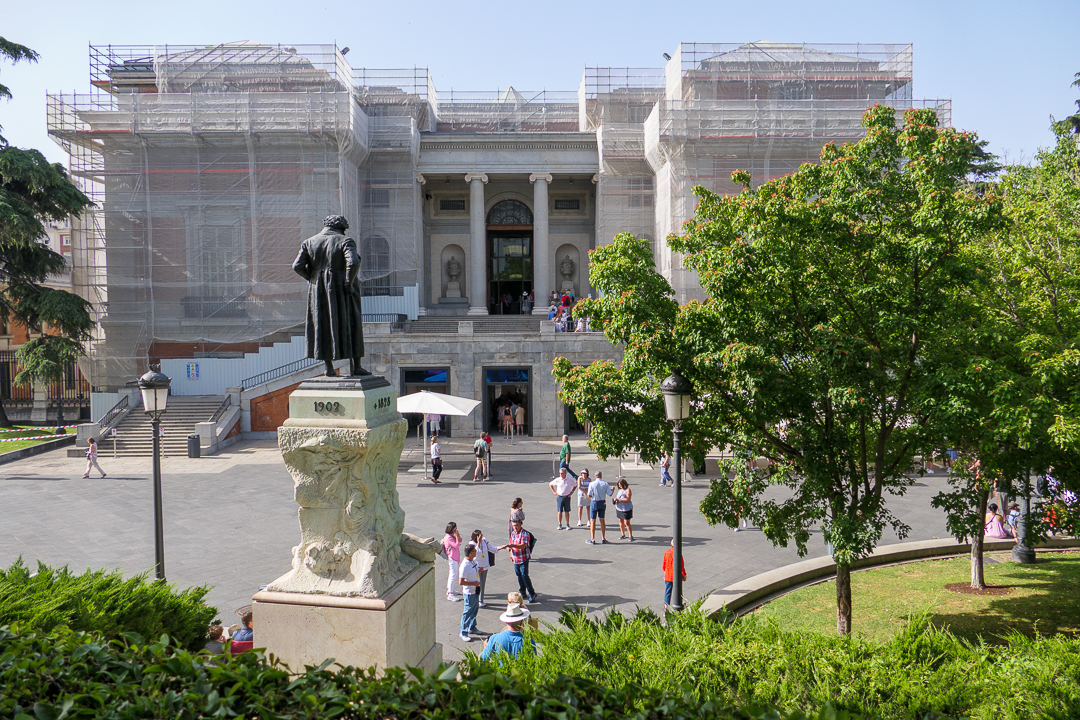
We walked past the Library of the Prado and the Jeronimos Church before getting to El Retiro Park.
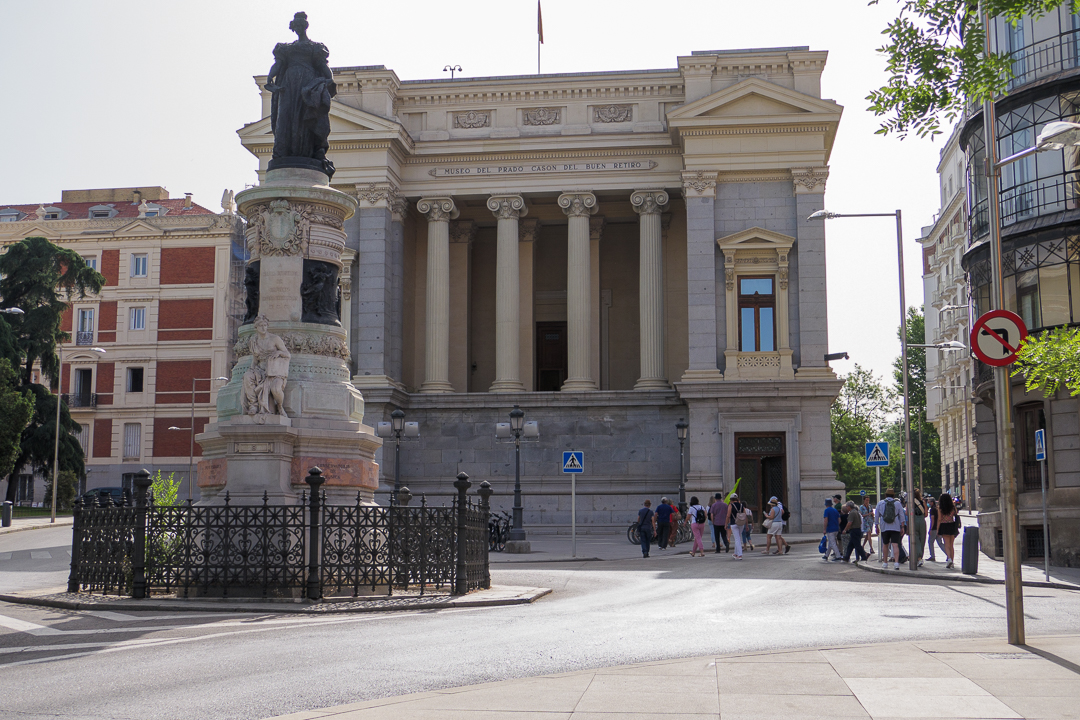
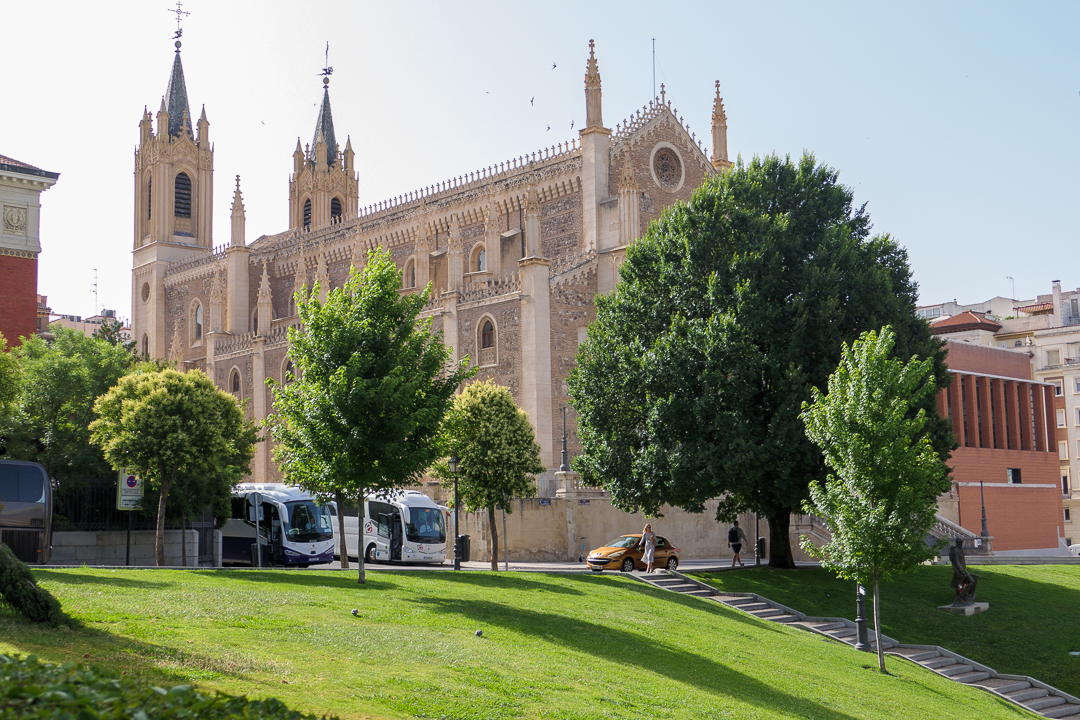
El Retiro Park used to belong to the Royal Family; it was their “nice retreat” in the country, but it’s long since been surrounded by city and the Royal Family gave it to the city of Madrid in the late 19th Century.
There were “yellow alert” warnings for heat at the entrance to the park, which meant that they planned to close some buildings at noon, including the Crystal Palace, so we went directly there.
Well, almost directly – Jackie showed us the Oldest Tree in Madrid, a Mexican conifer planted more than 400 years ago, and we stopped to take a photo at the Plaza Parterre looking back at Madrid.
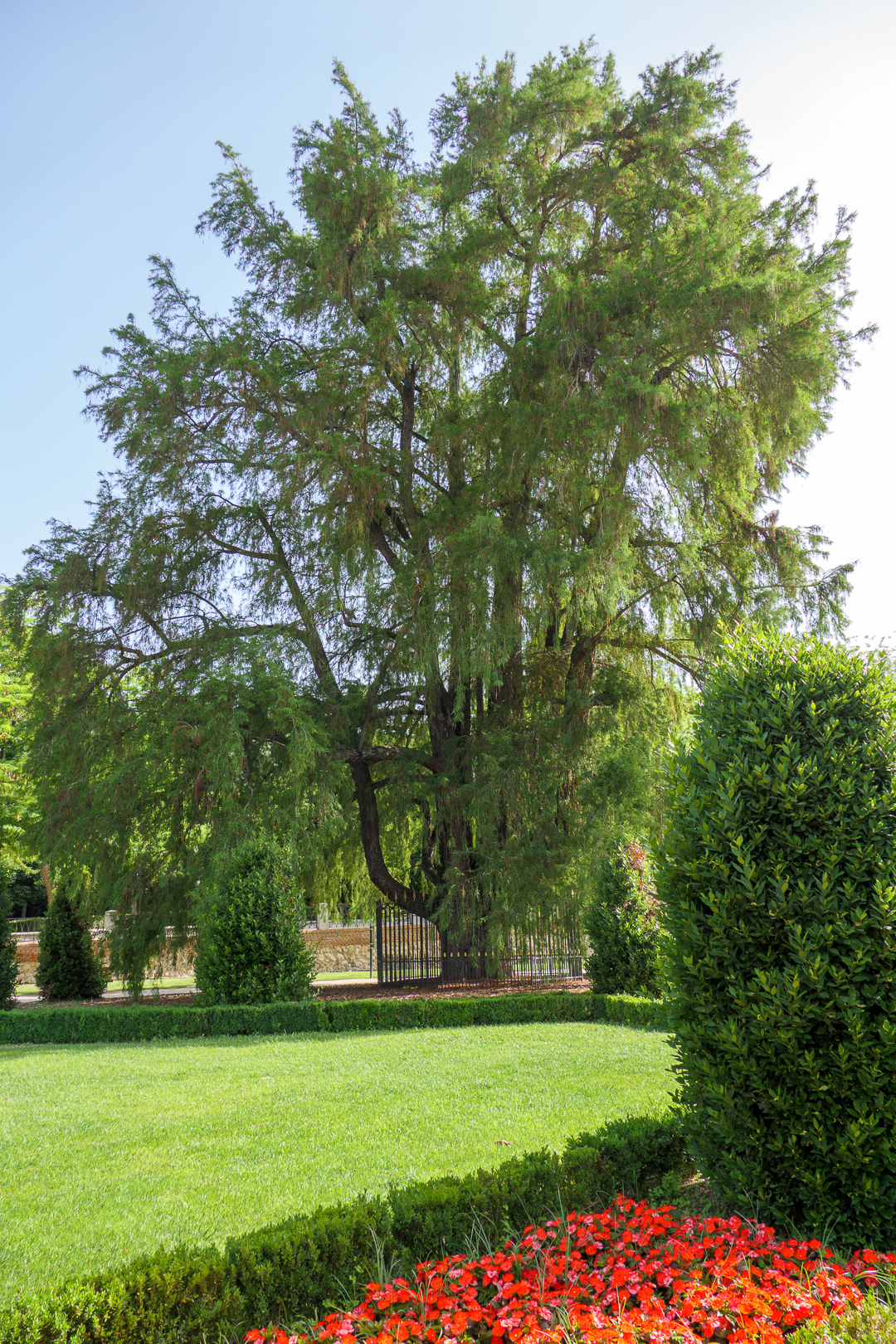
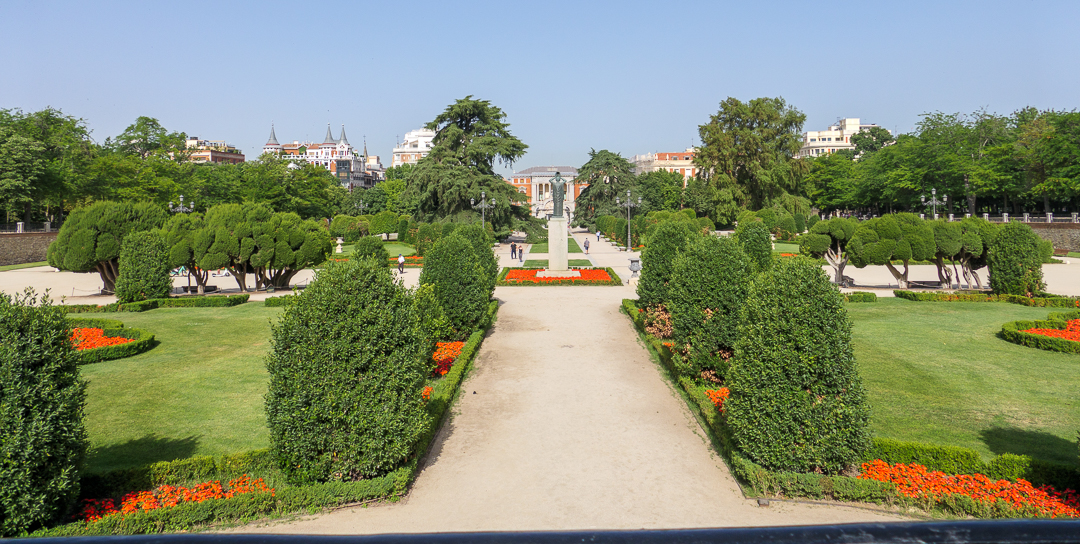
The Crystal Palace was built in 1887 as a greenhouse for an exhibit of Philippine plants and animals. It was designed so it could be moved to another site, but it’s never moved.
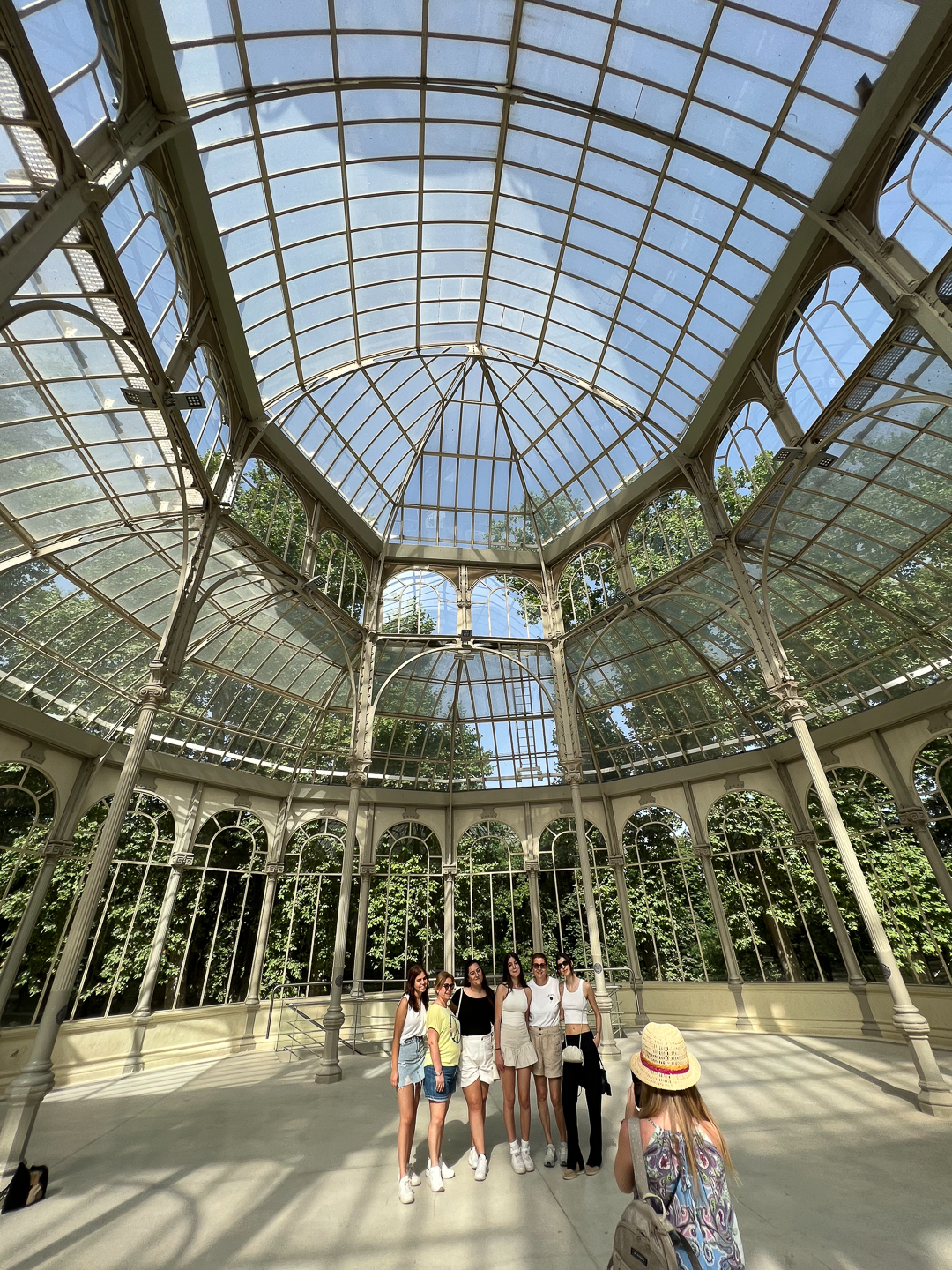
The Crystal Palace is now part of the Reina Sofía Museum and the current exhibit is called “Against the Extravagance of Desire” – it’s a cardboard construction!
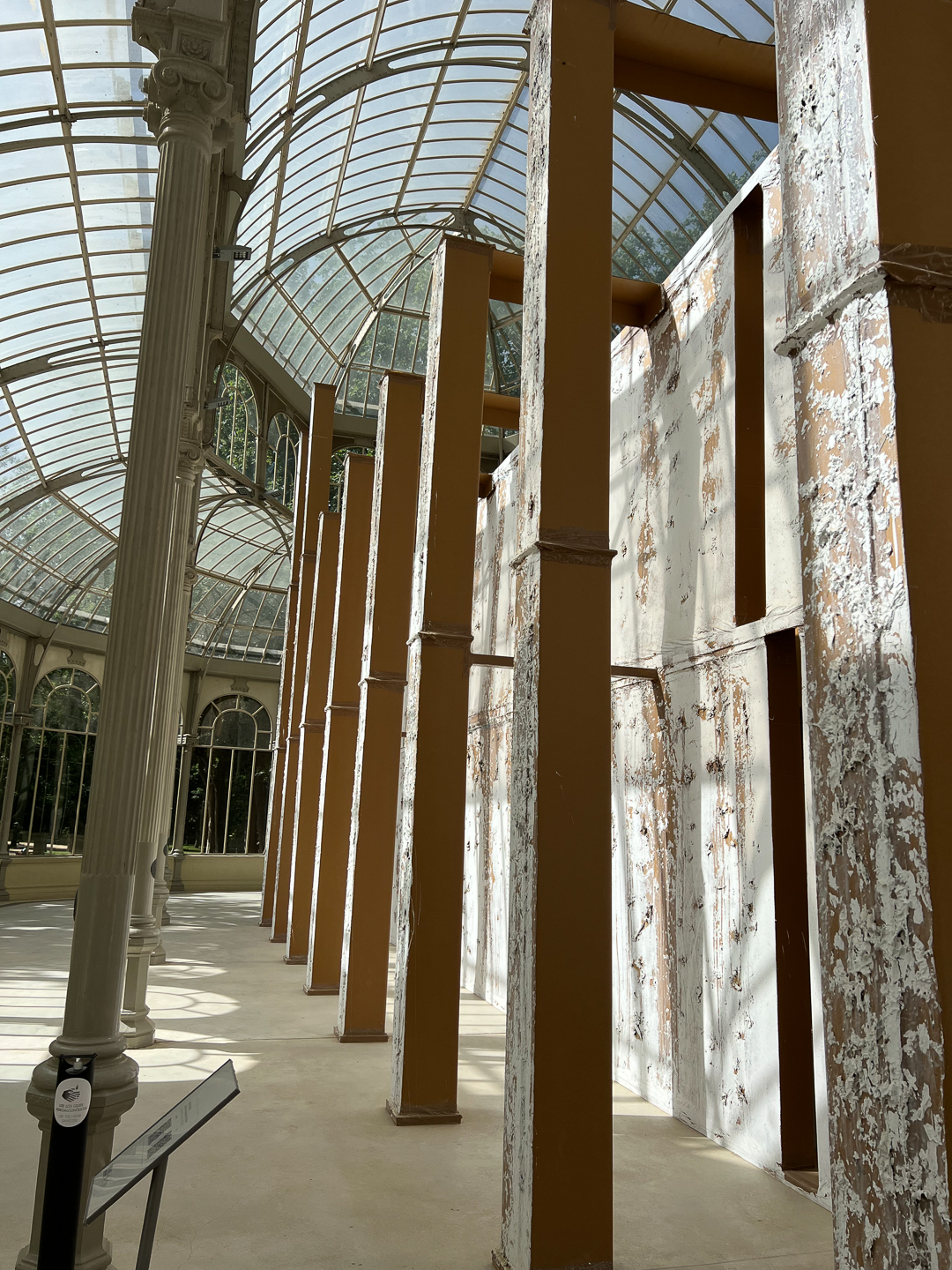
It wasn’t much hotter inside the Crystal Palace than outside – maybe the cardboard absorbed some of the heat. :-)
The Crystal Palace is next to a lake, complete with swans and turtles.
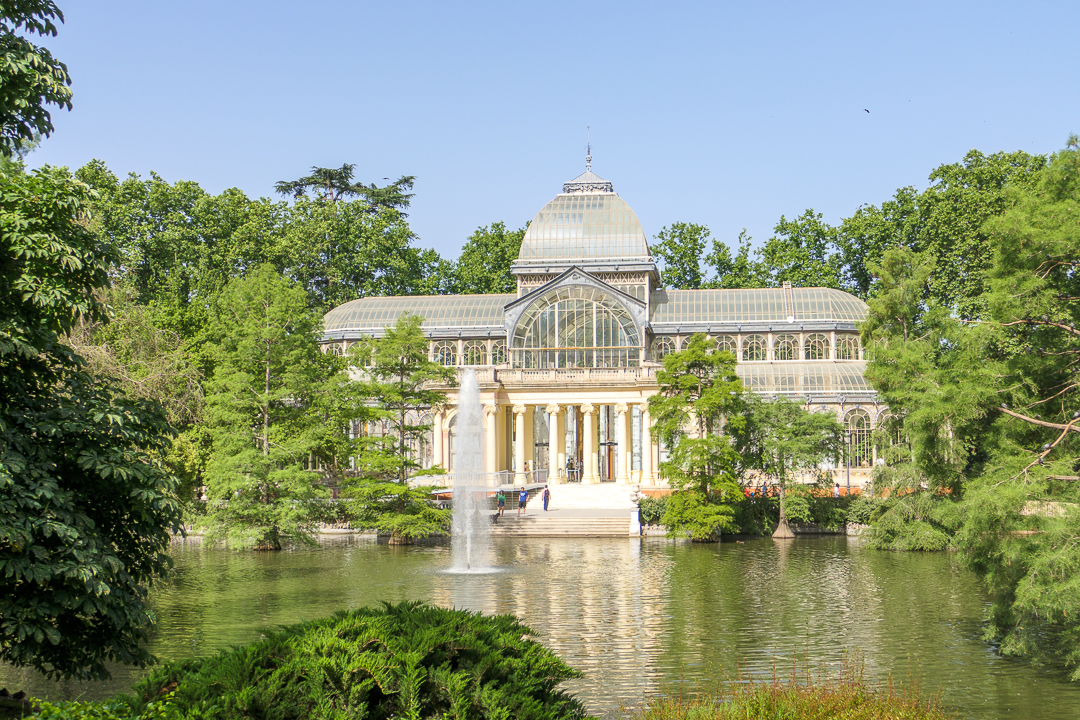
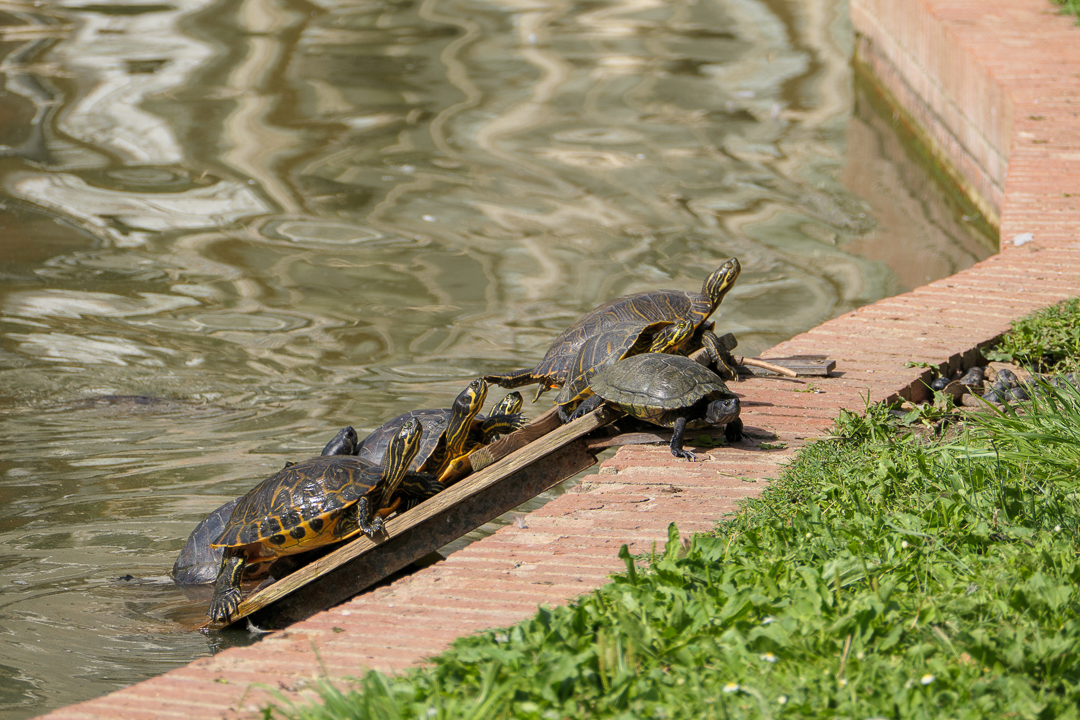
As we continued exploring the park, we saw the Fuente de la Alcachofa, which used to be at the roundabout near the main railroad station – they moved it to improve traffic flow.
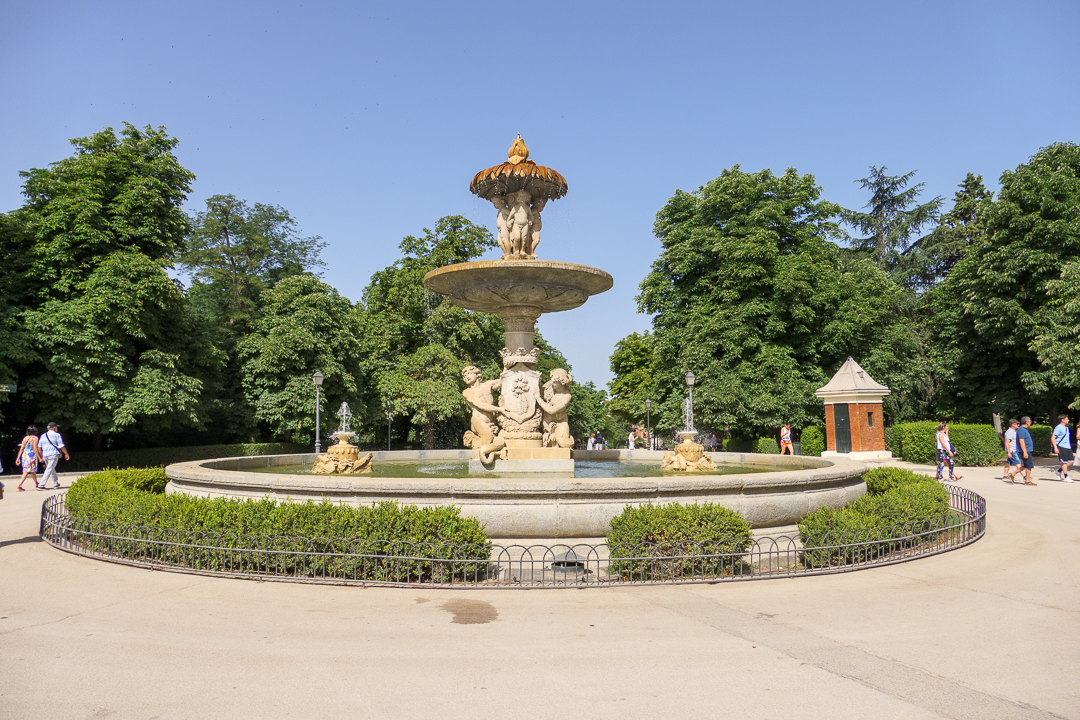
There’s a huge lake in the park, used for boating, with a statue of King Alfonso XII at one edge.
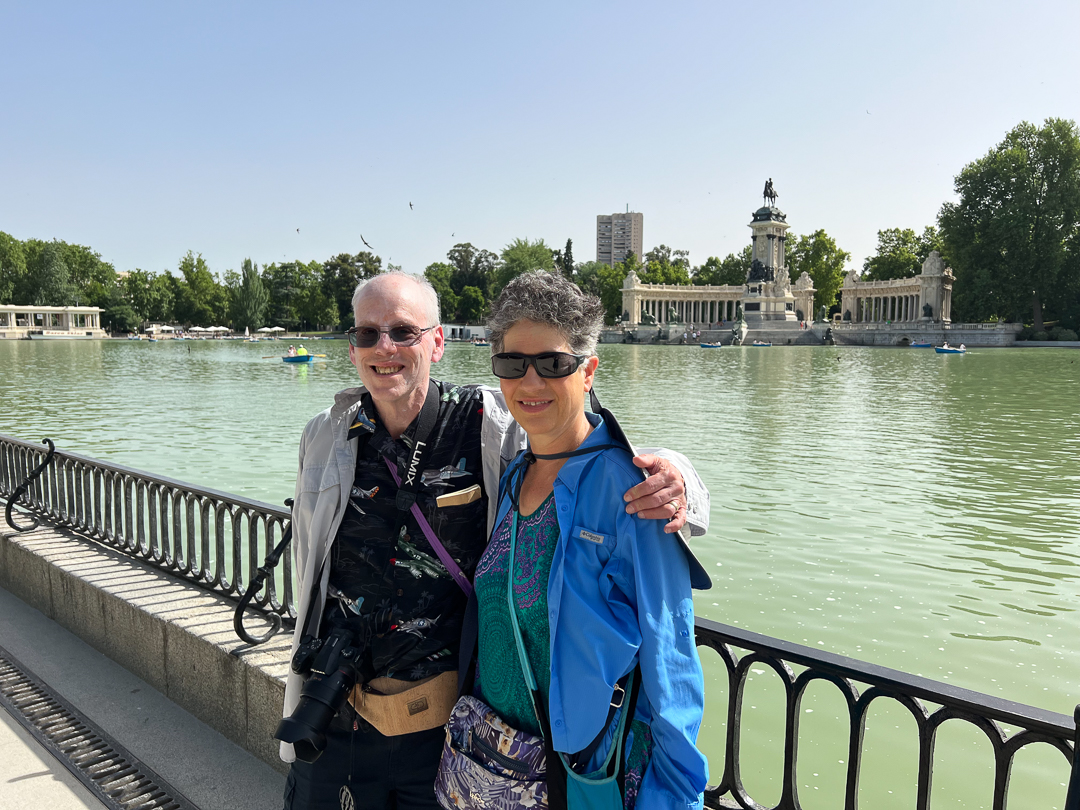
We left the park and went back into town, stopping by the Puerta de Alcalá and another monument to King Carlos III. It took me four tries to get a photo without traffic!
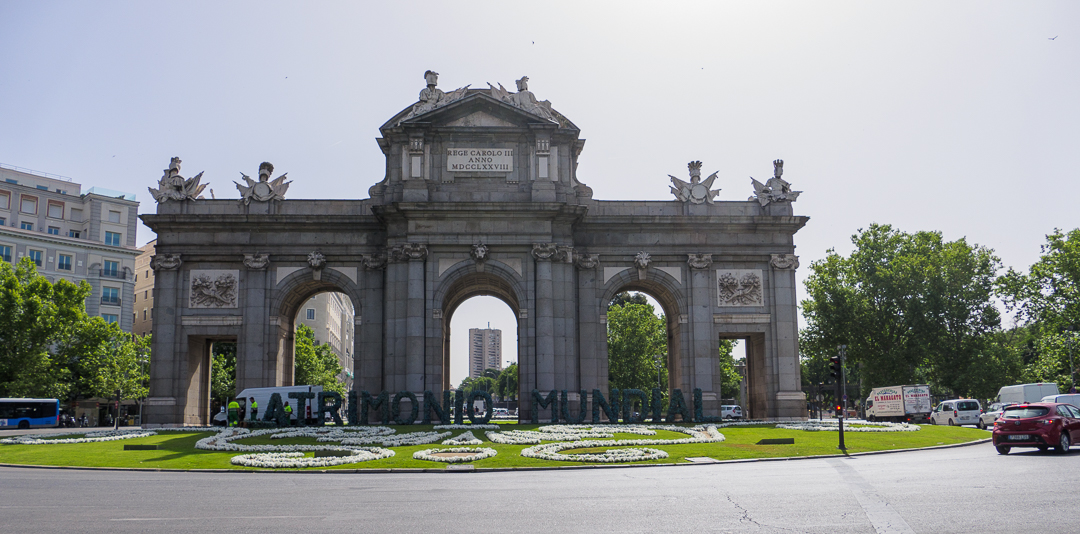
We continued down Calle de Alaclá until we reached the Paseo del Prado and the Fountain of Cibeles, one of three fountains dedicated to Greek deities on the Paseo.
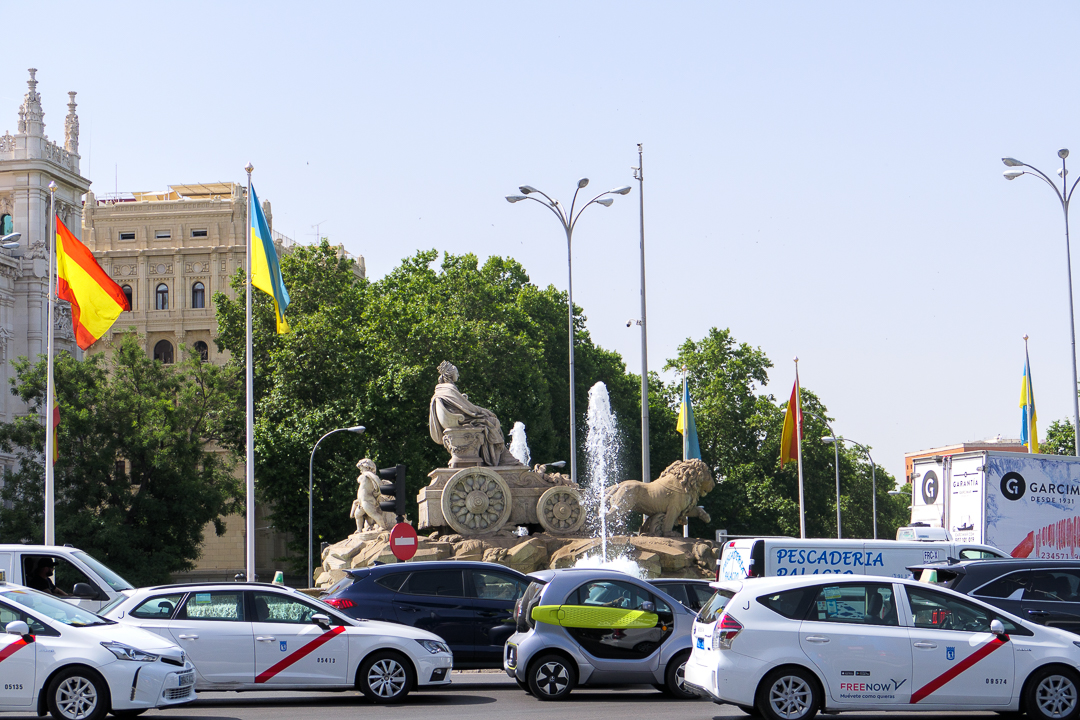
Our next stop was outside the Cervantes Institute, dedicated to spreading Spanish culture throughout the world.
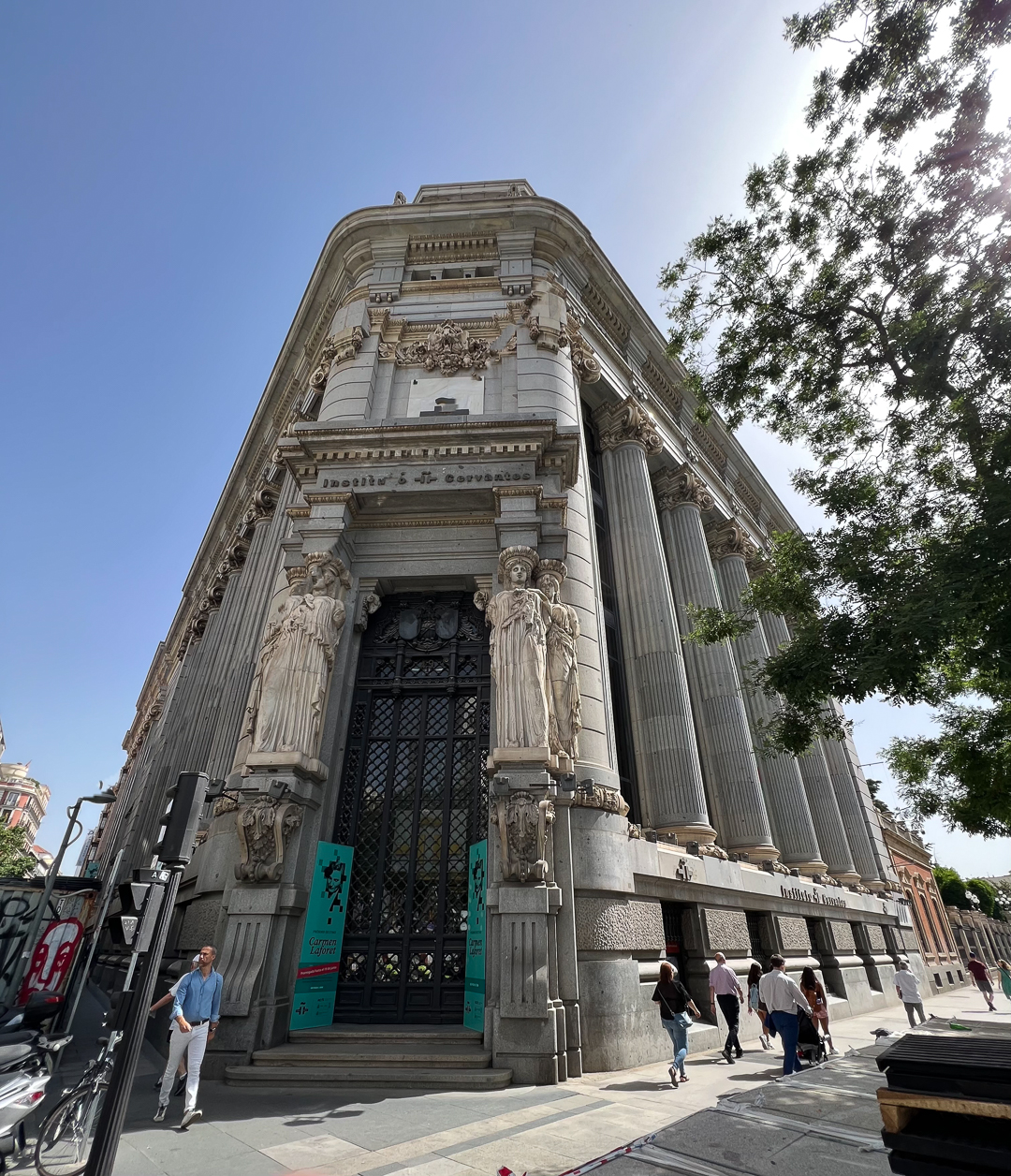
We took a look at the Gran Via, Madrid’s Broadway. Buildings are being repurposed all the time – this one, the Edificio Metrópolis, once owned by a Spanish life insurance company, will probably become a hotel.
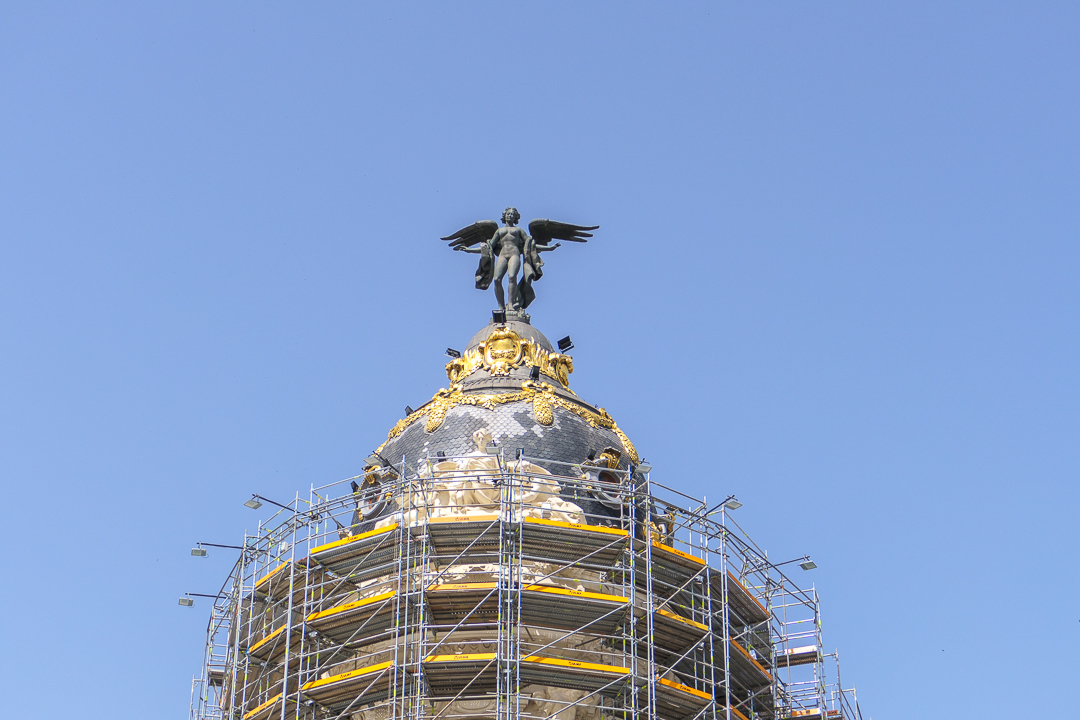
And this one, formerly owned by Equitable Life, has already become a hotel – a Four Seasons.

We were almost ready to start exploring the older section of Madrid, but first we had to walk through the Plaza del Sol – on our way, Jackie pointed out the candy shop which makes the most iconic candy of Madrid, La Violete. I noted its location for later.
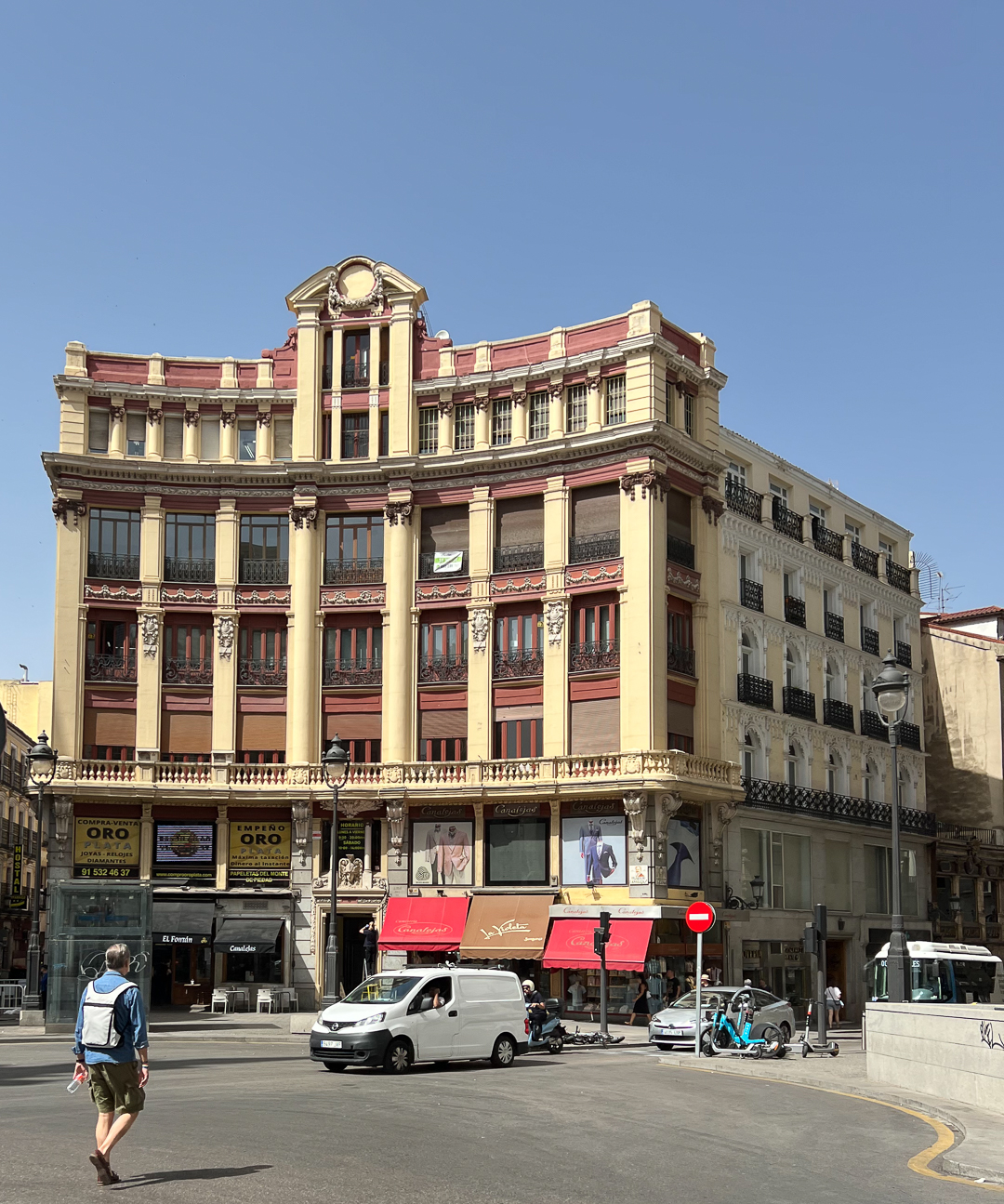
The Plaza del Sol is under renovation – when it’s finished, it’ll be a huge area for celebrations. They do plan to leave the statue of Carlos III in place, along with the Tio Pepe Sherry sign.
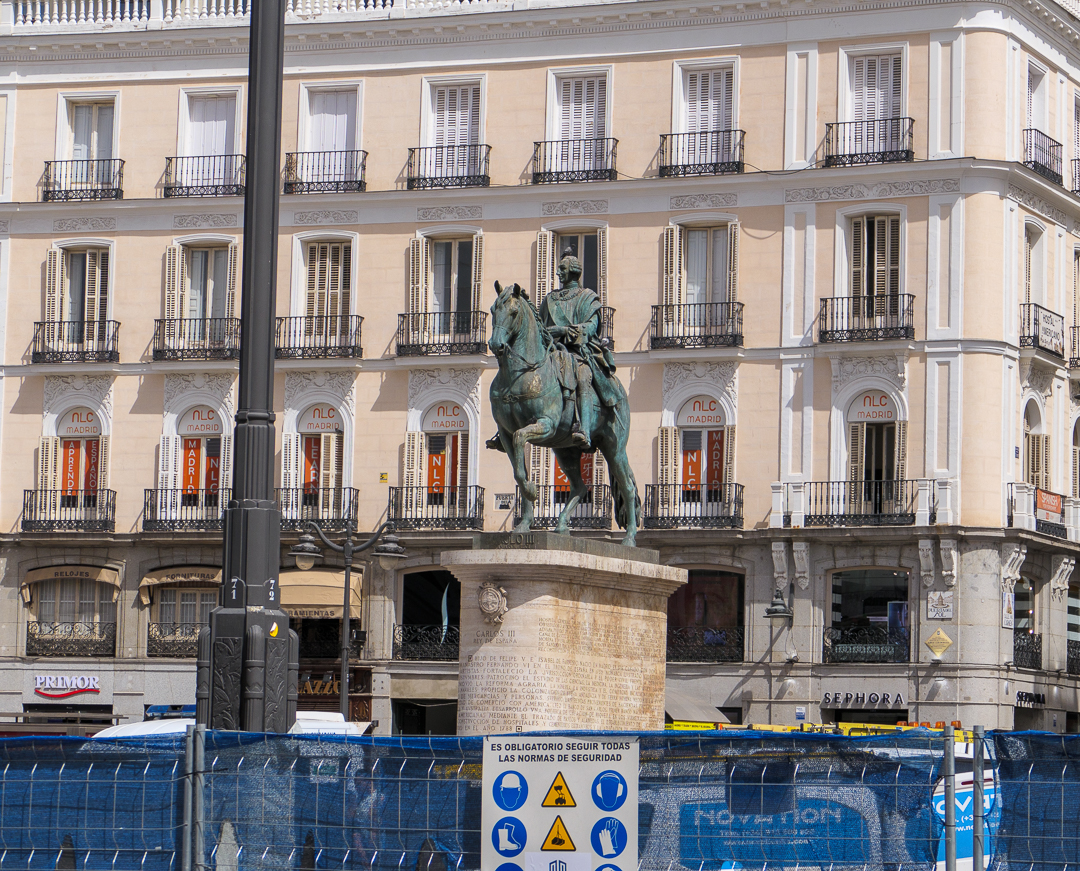
Madrid Region’s main office is in the plaza; the official Zero Kilometer marker for distances in Spain is right outside.
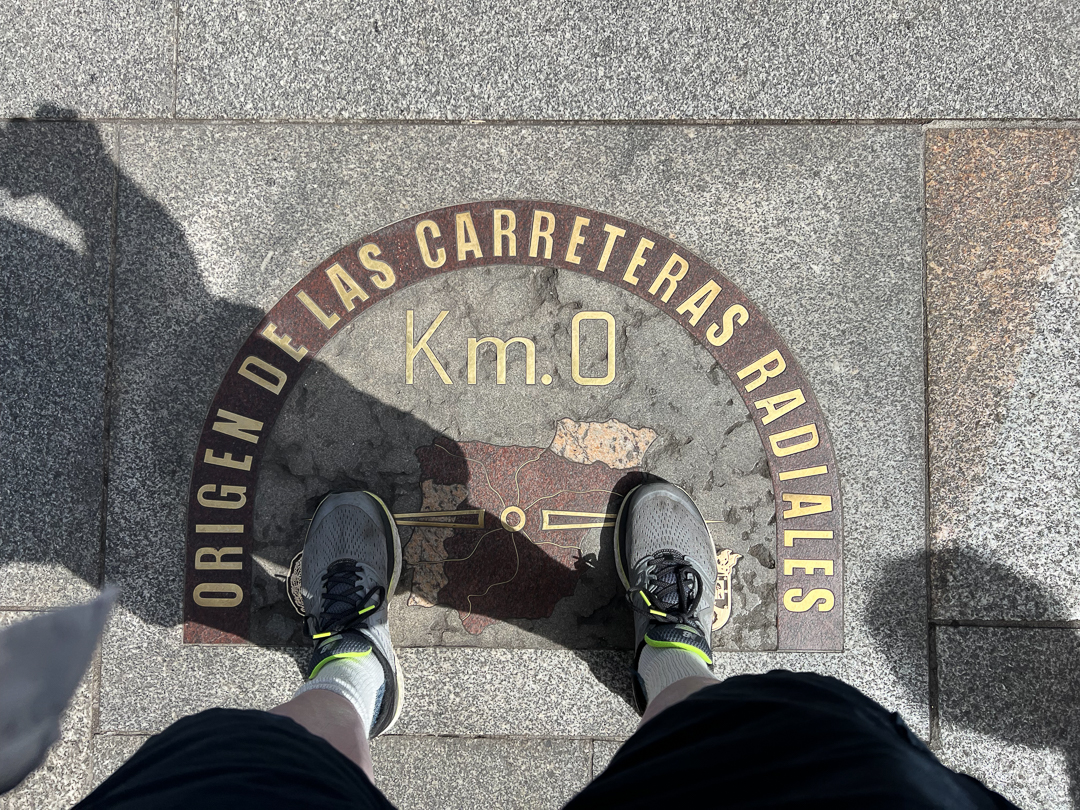
Madrid, of course, has a Plaza Mayor (every Spanish city does). Most of it burned down in the 18th Century; the building behind the statue is the only remaining original building.
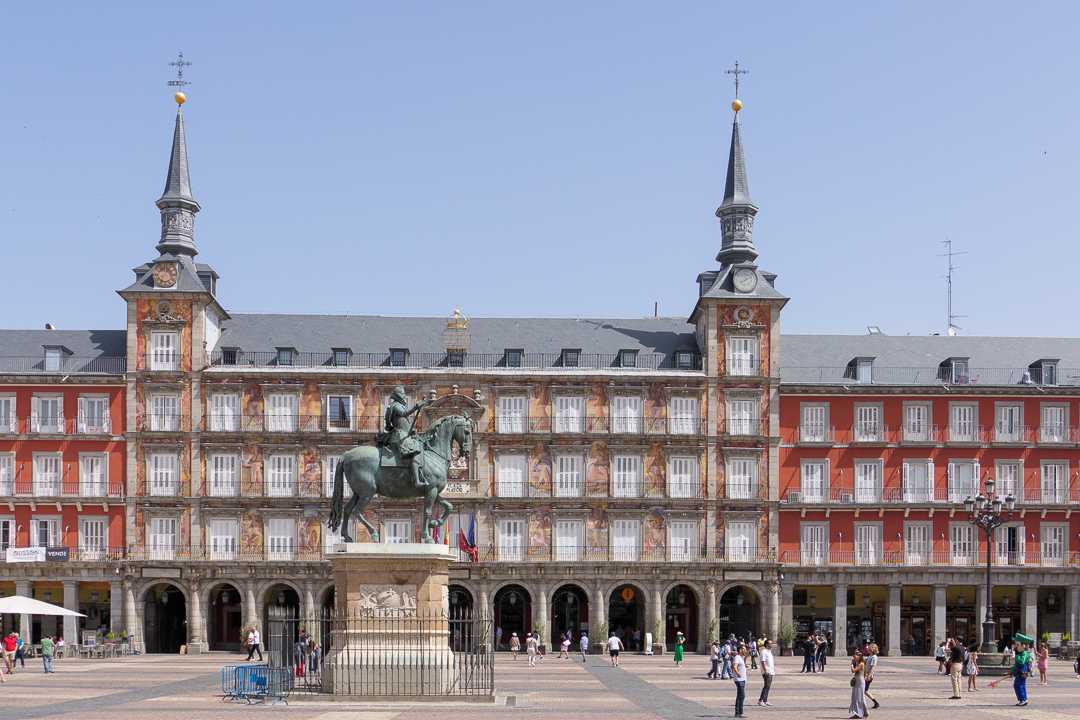
We made a quick trip to visit the cloistered nuns of the Monasterio del Corpus Christi. [They sell cookies], but we chose not to buy any today. There are some interesting decorations in their building.
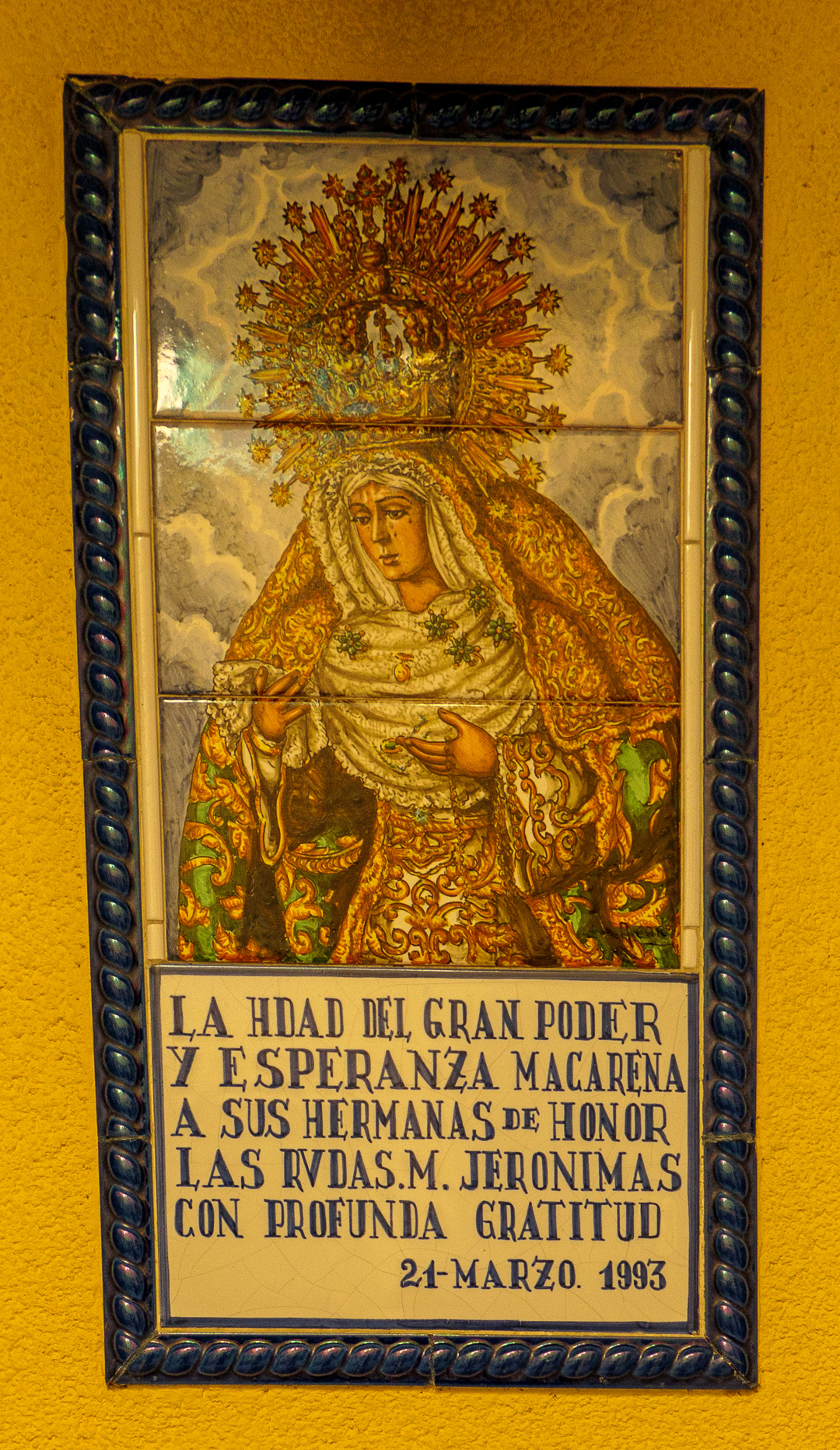
We stopped at the old Madrid City Hall on our way to the Cathedral and Royal Palace, and I discovered the reason behind the bear-and-tree statue I posted yesterday – that statue is patterned after the city’s coat of arms.
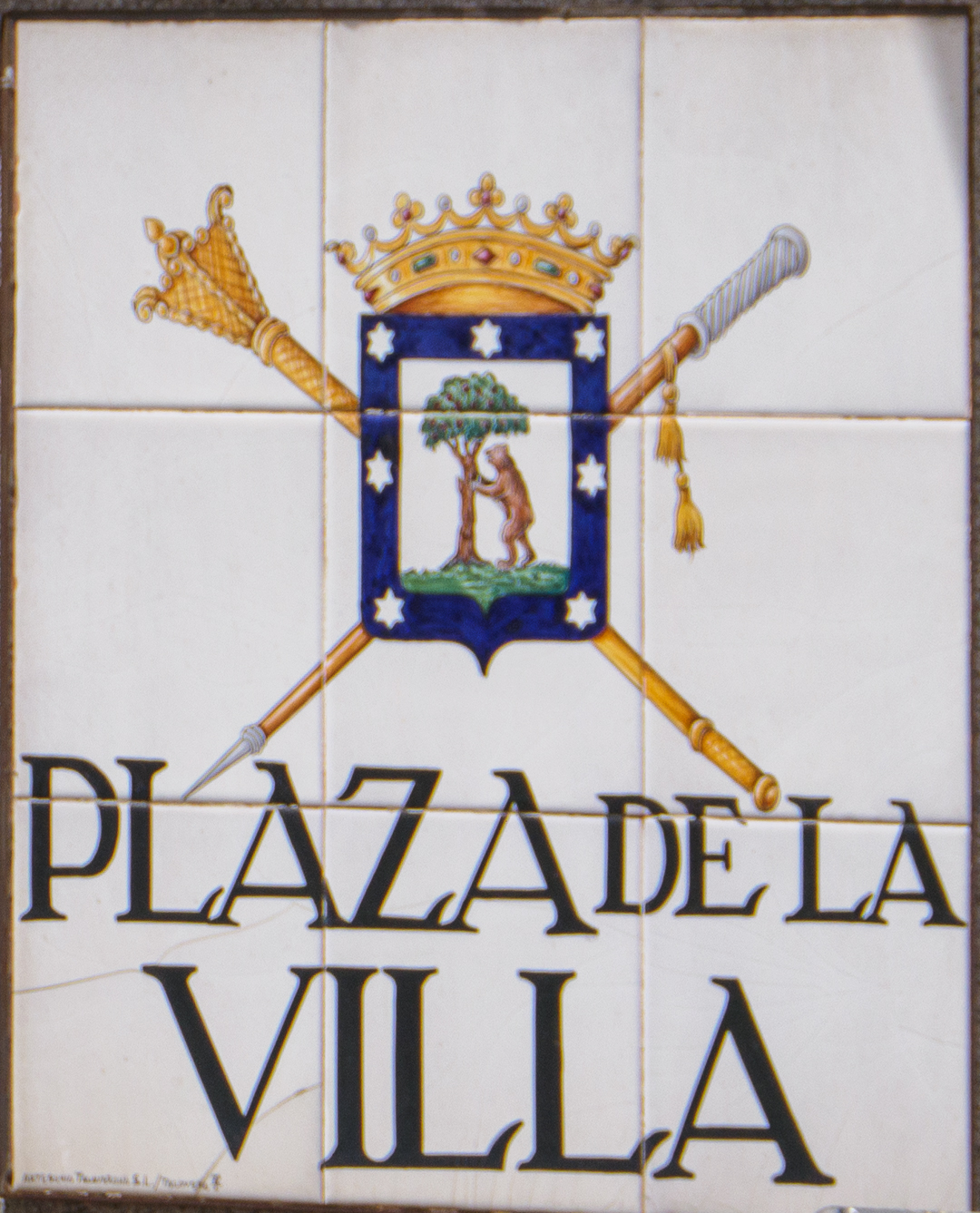
The Cathedral was completed in 1993 (it was not Madrid’s first Cathedral).
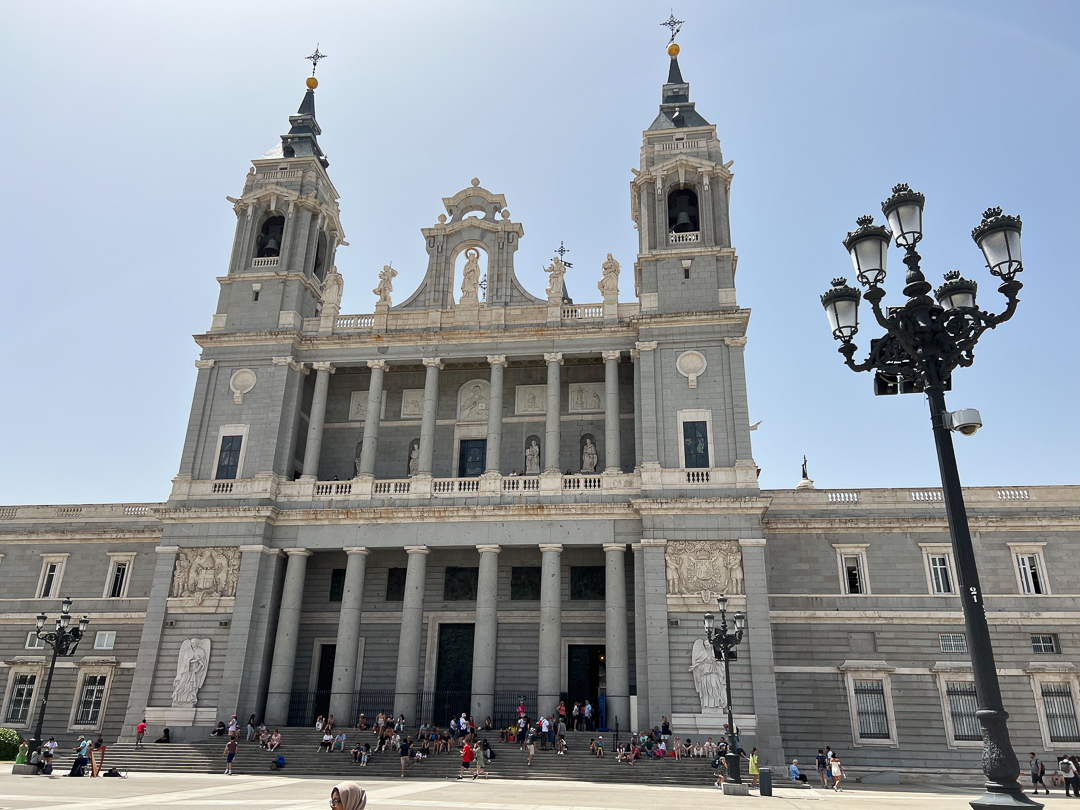
When the monarchy was restored after Franco’s death, the King decided he didn’t want to live in a 4,000 room palace, but it’s still used for ceremonial purposes. We plan to visit it on Wednesday.

The park adjacent to the Palace has statues (of course), including ones for the original Kings of Spain, the Visigoth Kings.
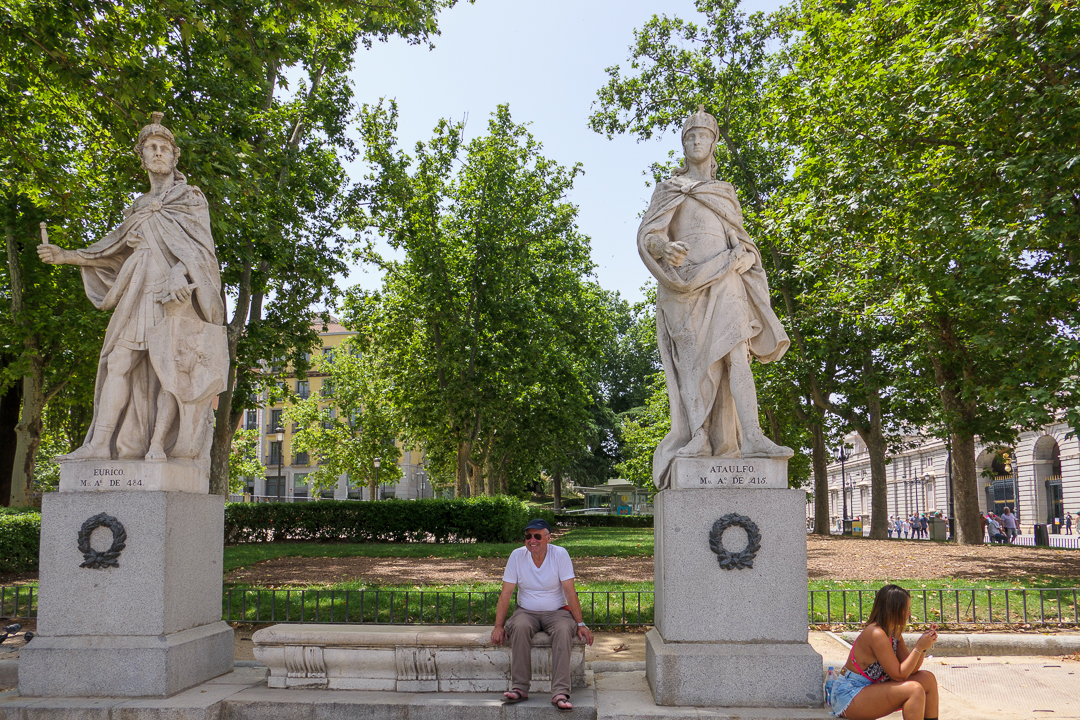
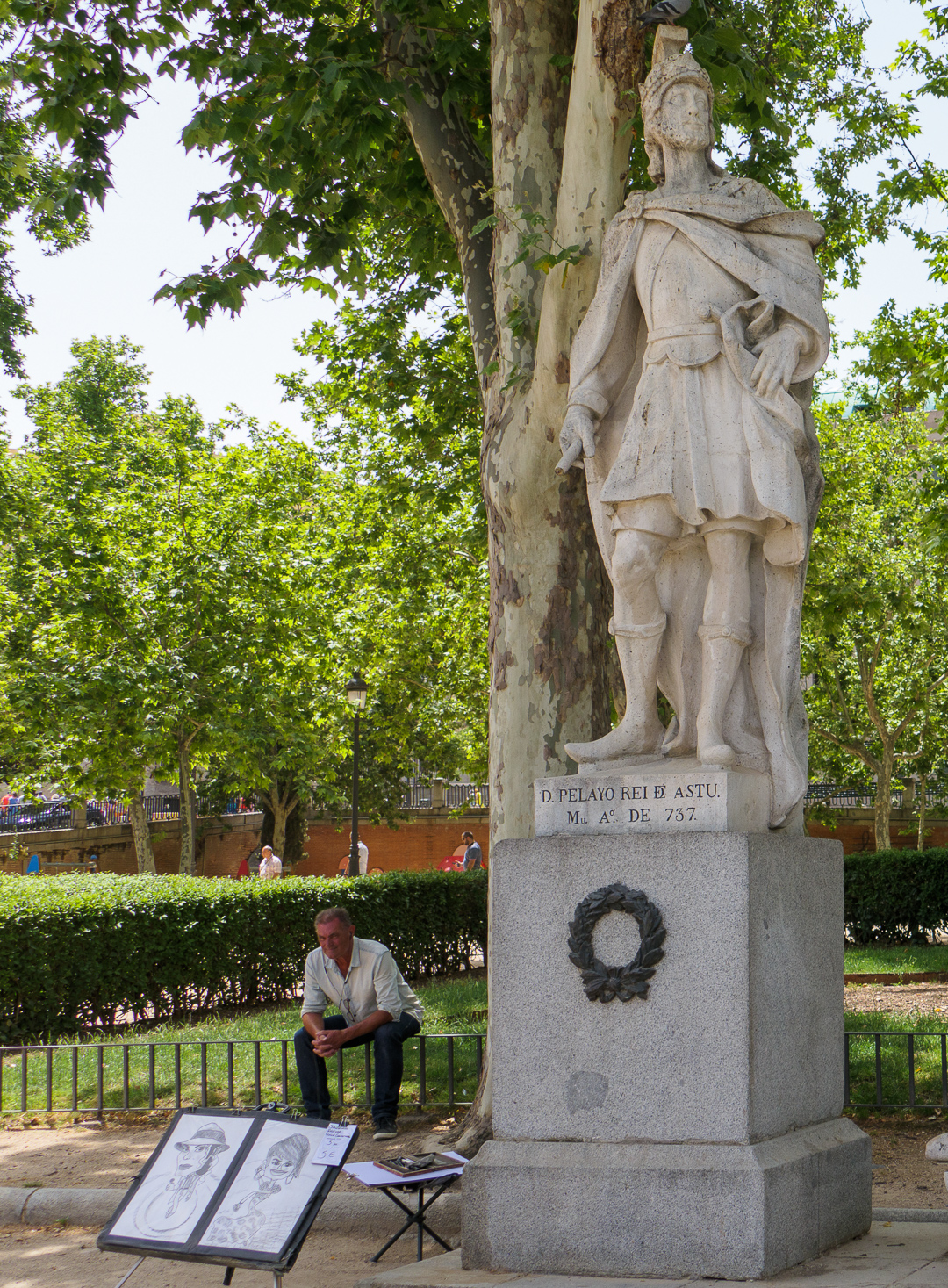
More modern kings have statues, too, such as this one of Alfonso I.

And that was our four-hour tour of Madrid. Jackie took us back to the Plaza del Sol so we could return to the hotel on our own – I stopped at the candy store on the way back, and we collapsed for a while.
When we were ready to face the world again, we visited El Museo Nacional Thyssen-Bornemisz, right across the street from our hotel. Jackie had advised us to start at the top floor with the oldest art and work our way down to the newest – we didn’t even finish the top floor.
I was amazed at how vibrant the early art was, like this painting of Christ and the Samaritan Women from around 1310.
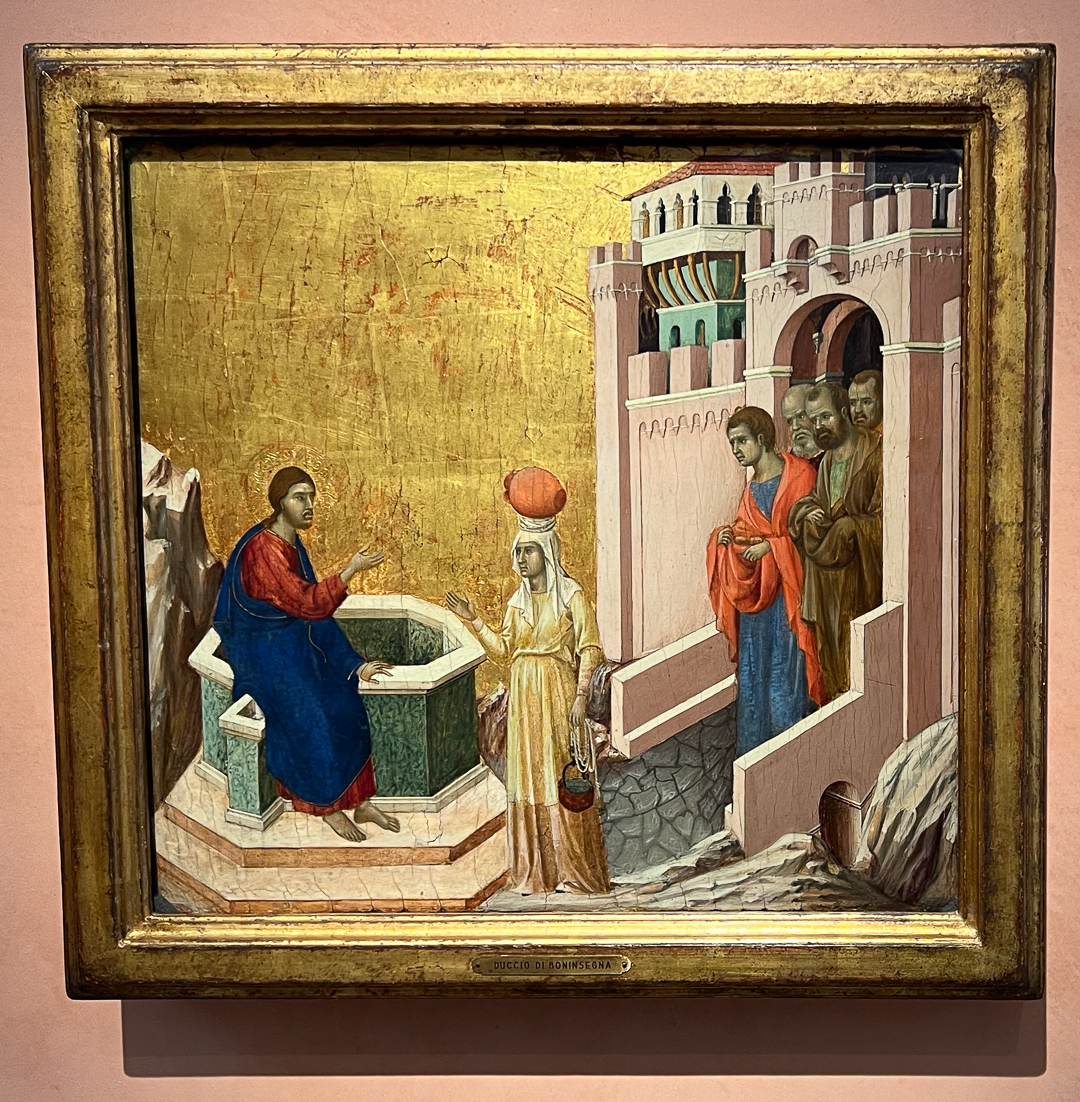
This Portrait of Giovanna degli Albizzi Tornabuoni from 1489 stopped me in my tracks. It’s amazingly three-dimensional.
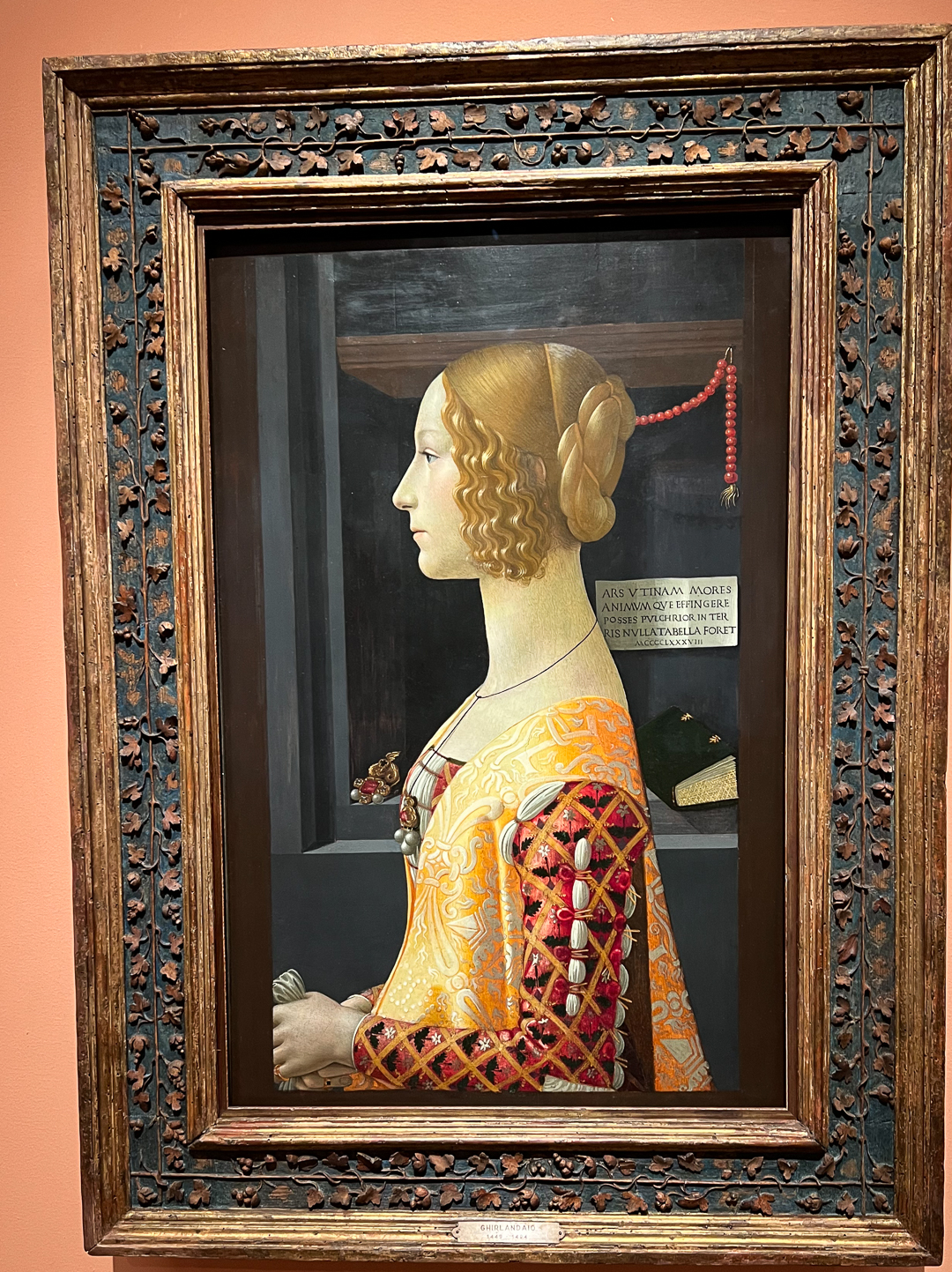
I liked The Meeting of Tamar and Judah by Tintoretto, too.
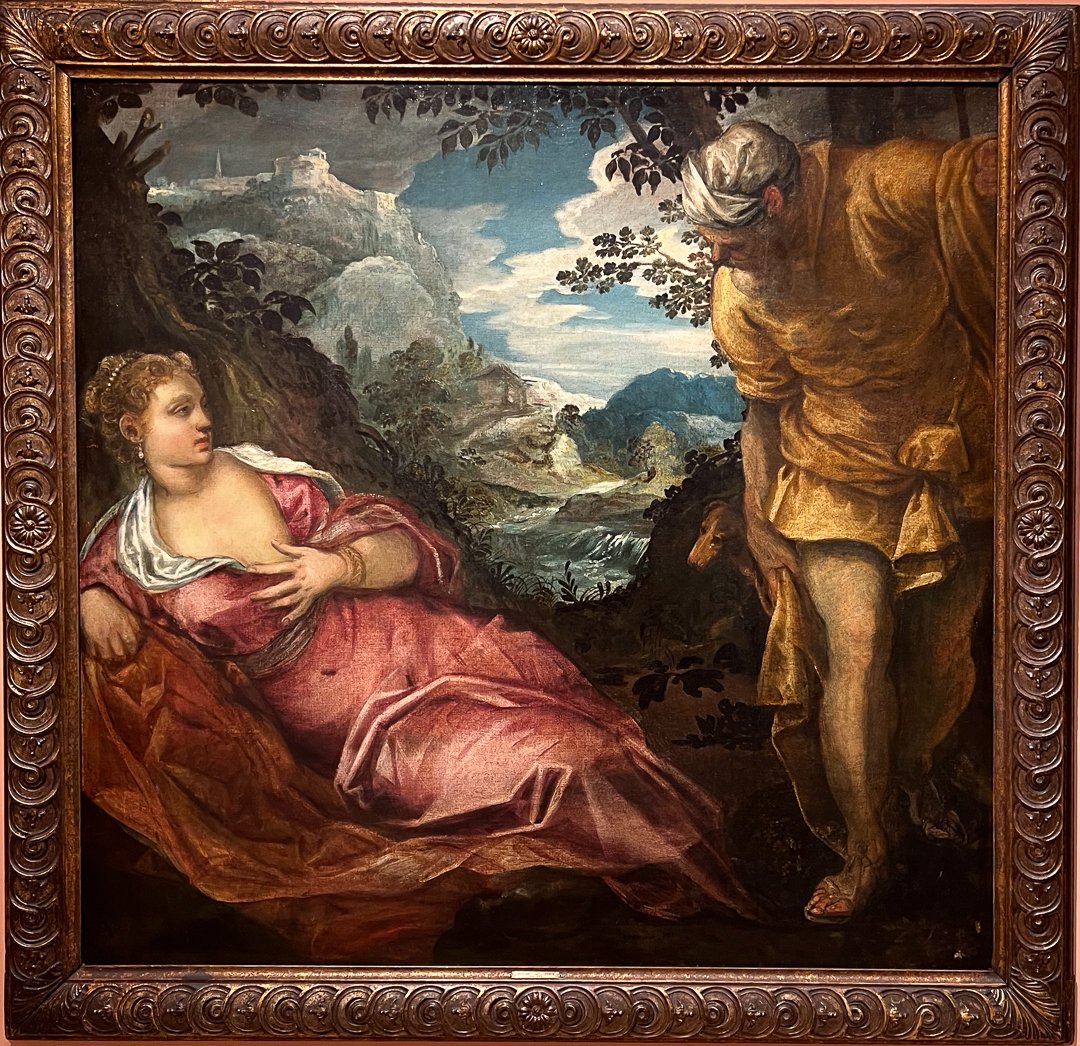
The museum closes early on Mondays, so we had to leave before 4pm. I did get to glimpse this one very contemporary work on my way out.
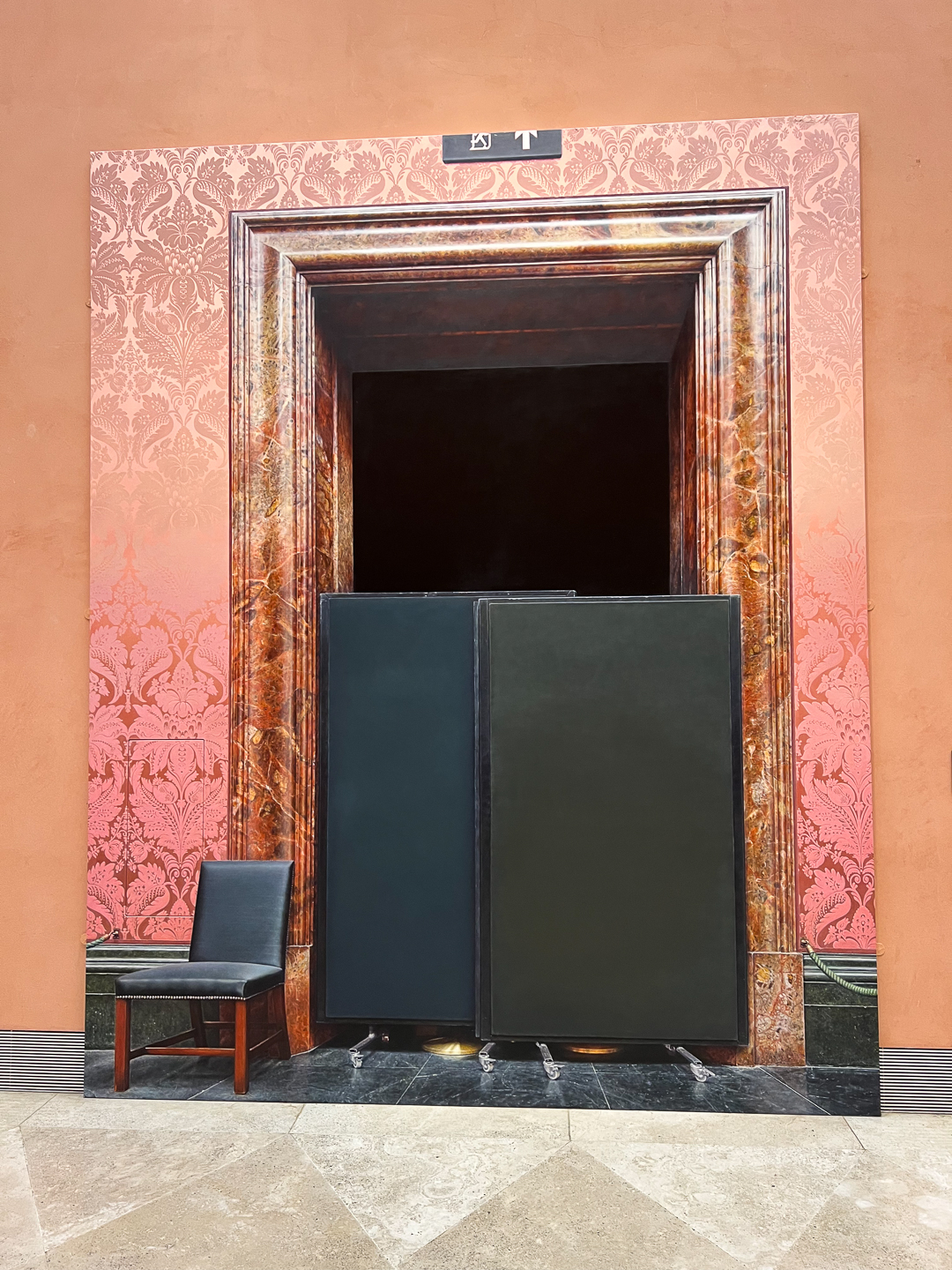
We went back to the hotel to cool off again; we left one more time, with three goals:
- Have dinner
- Find our meeting point at the railway station for tomorrow’s tour of Toledo
- See Guernica at the Reina Sofía Museum
The first two were easy, but when we got to the museum, there was a huge line waiting for 7pm when free admission began. We didn’t have to wait, though, because people over 65 get free admission all the time – we got to the room with Guernica about ten minutes before the crowds arrived.
They don’t allow photos in the room with Guernica to avoid traffic jams; the rest of the museum welcomes photography. I was pretty tired by then, so I only took one photo, of Man Ray’s Indestructible Object.
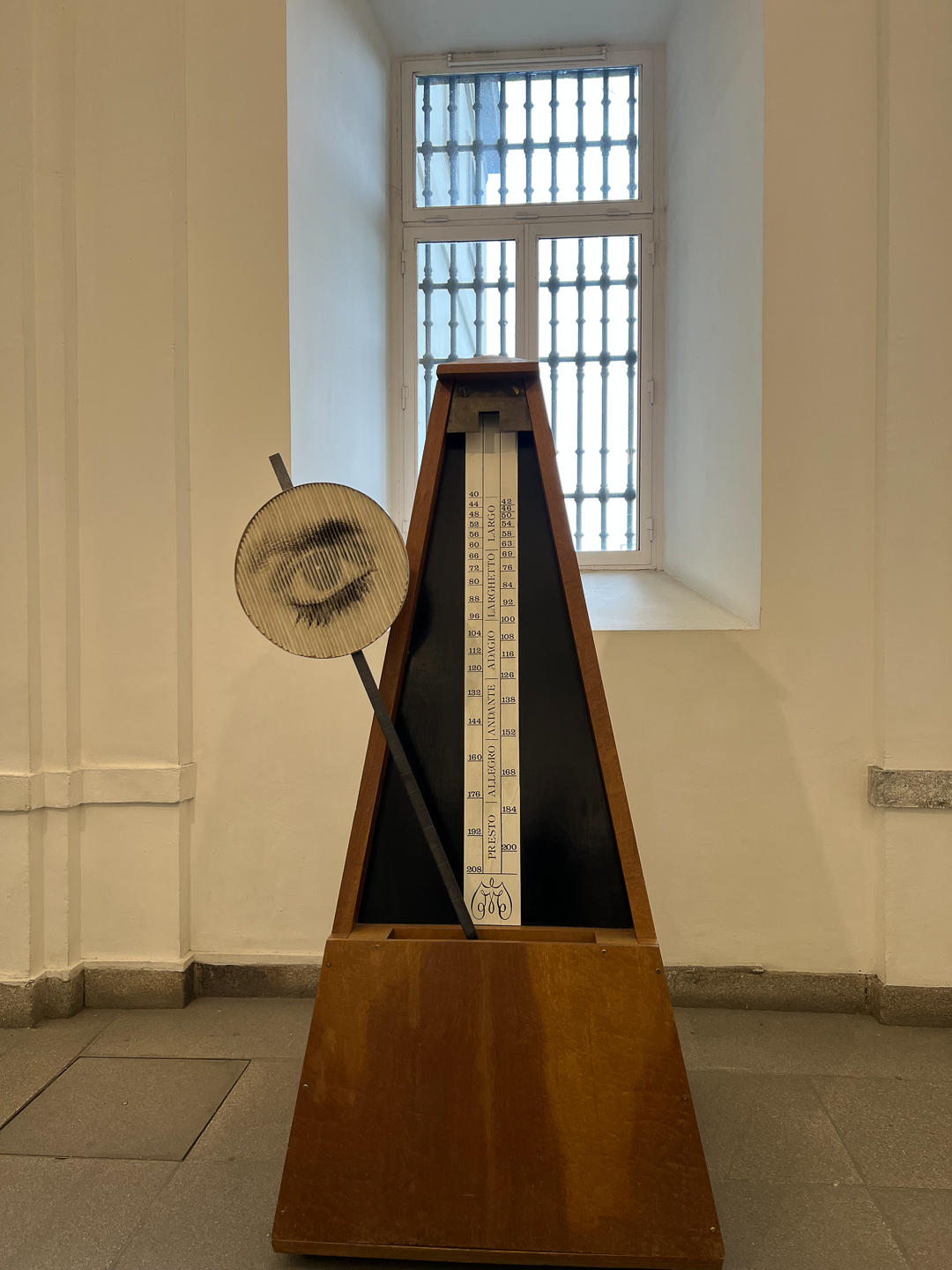
Tomorrow is supposed to be even hotter than today, and Toledo is usually about five degrees Fahrenheit warmer than Madrid. Wish us luck!